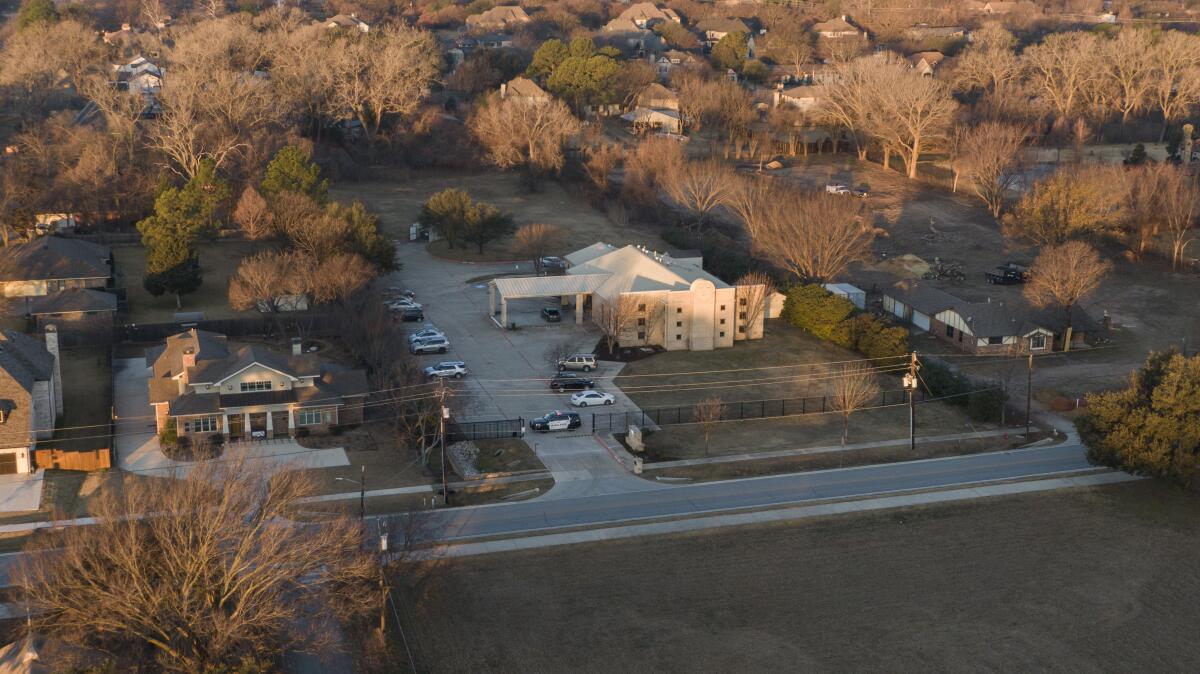Op-Ed: What can we do after a hostage-taker shatters the serenity of Shabbat?

Shalom, in Hebrew, can mean both “hello” and “peace.” To say Shabbat shalom, therefore, is to greet the Sabbath and describe its serenity. Or perhaps, to say hello to peace.
I am not religious. I do not keep Shabbat in the traditional sense. But like many other Jews, I’ve found it to be an opportunity for rest and reflection.
Shabbat was a tradition at a summer camp I used to attend. Counselors led campers in song. My friends and I put our arms around each other. We swayed. Our heartbeats slowed.
In September 2019, I ran through a Jerusalem park toward the setting sun as Shabbat approached. Families of all faiths played with their children in the last wisps of light.
At Stanford University, Shabbat dinners demarcate the boundary between week and weekend. I catch up with friends. I forget about my to-do list. The air I breathe feels different. Unburdened.
On Saturday, Shabbat’s serenity was shattered: A man entered Congregation Beth Israel, a Texas synagogue in the Dallas-Fort Worth area, and took four people hostage. Thankfully, none of them was physically harmed. But it was still violence that deeply hurt the Jewish community.
Shabbat is a tenuous project in the best of times — an attempt to construct a bubble outside the normal rhythm, stresses and work of daily life. The hostage-taker punctured that bubble. He undermined the idea of Shabbat and upended Jews’ already precarious sense of security.
The almost 11-hour standoff resurfaced memories of the 2018 terror attack on the Tree of Life synagogue in Pittsburgh and the 11 lives lost. This latest assault occurred as antisemitism is rising, in the U.S. and around the world. Once again, an “act of terror,” as President Biden called it, has eroded our confidence that we can be safe in public spaces.
What can we say at a moment like this? What can we do? My best answer to the helplessness I feel is a tool that unites my Jewish identity with my progressivism: hoping far ahead.
In his 1918 “The Spirit of Utopia,” the German Jewish philosopher Ernst Bloch wrote that “what is left for us here, we who suffer and are dark, is to hope far ahead.” Hope is the weed that grows in cracks of cement. At times it is lonely, the only living thing left when all else has been steamrolled. Yet its growth inspires us to imagine that, far ahead, other things may thrive and live again.
Suffering and hope are the twin strands that weave the Jewish story. Rarely, however, are hopes fulfilled within a lifetime. Moses, for example, did not live to reach Israel. Jonathan Sacks, who was a prominent rabbi in the United Kingdom, wrote that in the Tanach (the Hebrew Bible), “the Jewish story ends, as Moses’ life ended, with a glimpse of the land not yet reached, a future not yet realized.” Jewish hope, like Jewish suffering, is intergenerational.
A more modern illustration of hoping far ahead is Raphael Lemkin, the one-man legal machine who coined the term “genocide” and worked to ban it under international law. Forty-nine members of Lemkin’s family, including his parents, were murdered in the Holocaust. After the war, Lemkin continued his longstanding crusade against mass murder in the halls of the new United Nations. “You and I, we must change the world,” he pleaded with diplomats and journalists.
Lemkin saw his hopes partially vindicated. In December 1948, 55 yesses thundered through the Palais de Chaillot in Paris as the U.N. adopted its first human rights treaty. Lemkin, crying in a darkened assembly hall hours later, declared its passage as “an epitaph on his mother’s grave.” Yet in 1959 Lemkin died at 59 alone, poor, and having witnessed America — the country he once idealized — fail to ratify the convention, a step it would take only decades later.
Lemkin recognized that hope’s arc is longer than a single lifetime. History, he argued, is “much wiser than lawyers and statesmen.” Lemkin also knew, however, that the world does not become more just or safe simply because we believe it will. The wisdom of history is won through the work of people like him, people who pound against walls of indifference again, and again, and again.
To hope far ahead, then, is not just an expectation that things will improve. Hope is something we do.
My grandfather, Itzhak Ziv, often told the story of his escape from a Siberian gulag during World War II. Trudging through snow, he stopped to rest under a tree. He knew that if he fell asleep he would freeze to death. And so he put a stick under his chin. When he nodded off, the stick prodded him awake. He survived, found a new home in Israel, started a new family with my grandmother and accomplished so much more — all because he acted to create hope with a single stick.
I’m thinking of that stick as I try to process the attack on Congregation Beth Israel. I’m thinking of how even if we do not live to see our hopes fulfilled, the future existence of a better world is at least partially within our control, today. I’m thinking of how small actions are invisible threads we can cast out of the present darkness, tiny tendrils of hope growing through cracks of cement.
Nadav Ziv is a senior majoring in international relations at Stanford University. @nadavsziv
More to Read
A cure for the common opinion
Get thought-provoking perspectives with our weekly newsletter.
You may occasionally receive promotional content from the Los Angeles Times.










